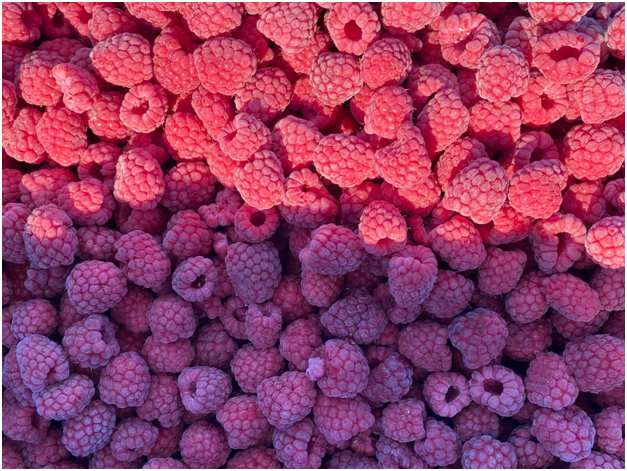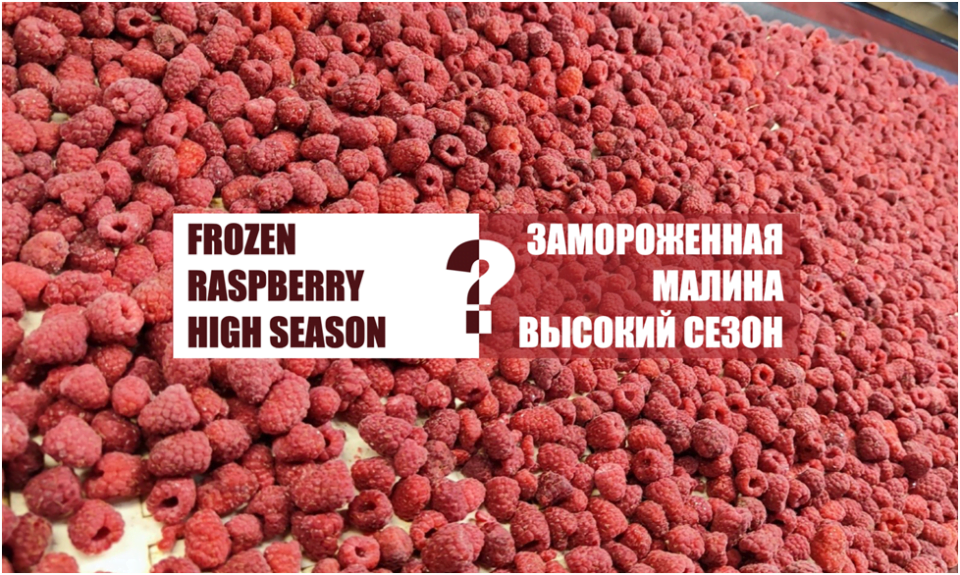At EastFruit, our analysts maintain a vigilant watch over the European frozen raspberry market, recognizing its direct impact on the income outlook for raspberry growers in Ukraine and Moldova.
Our preliminary forecasts have once again proven accurate. As we approach mid-April 2024, the European raspberry market has reached a fever pitch, with prices soaring to their highest levels in the past 15 months. Interestingly, there remains ample time before the main frozen berry-producing countries commence their new crop harvest, hinting at the potential for further price escalations.
Let’s delve into the details step by step.
The Start of the 2023/24 Season: Unanticipated Developments
The beginning of the 2023/24 season sent shockwaves through the raspberry sector in Europe and Asia. Despite exceptionally high stockpiles of frozen raspberries in Serbia and Poland, buyers remained elusive, regardless of pricing. Even rates as low as 1.0-1.2 euros per kilogram failed to attract interest for raspberries that didn’t meet the highest quality standards. Our earlier article on the “cyclicality of raspberry prices” delved into the reasons behind this situation.
As Ukraine commenced its raspberry harvest, hopes for price recovery seemed dashed. Freezer companies further slashed raw material prices, driving raspberry prices for freezing down to an astonishing 12 UAH/kg. Many believed this reinforced the notion of maintaining rock-bottom prices for the final product, considering Ukraine’s exceptionally low production costs.
However, experienced market participants recognize that product prices extend beyond production costs alone.
The Polish Factor: Concerns and Consequences
During the summer and fall, Poland witnessed unrest and outrage related to the import of raspberries and other food products from Ukraine. Fearing the impact of Ukraine’s low prices, Polish farmers hoped that blocking imports from a single country would resolve the pricing issue.
To some extent, they succeeded. Raspberry prices began a significant ascent only in December 2023 when Poland initiated border blockades with Ukraine. This disruption halted the flow of raspberries from Ukraine to Poland. It’s crucial to note that Poland heavily relies on importing and re-exporting Ukrainian berries for its frozen raspberry exports within the EU. As a major exporter, Poland faced a shortage of its own raspberries in Europe due to these actions.
However, the primary driver behind the price surge was the sudden surge in demand for raspberries. After two consecutive years of depressed prices, dairy processors, confectioners, and other food industry players reintroduced incredibly cheap raspberries into their product formulations, thereby reducing costs. This coincided with the border blockades and provided the impetus for price growth.
2024: The First Quarter
Early in 2024, rumors circulated about critically low stocks of frozen raspberries across various quality categories. Industry insiders buzzed about this topic, prompting raspberry owners to raise prices. Since then, raspberry prices have maintained a steady upward trajectory, and the market has become exceptionally active. Deals are transpiring across all quality tiers, assuming raspberry availability. For further insights, refer to our article on raspberry quality categories.
Throughout the first quarter of 2024, prices continued their ascent. Notably, food manufacturers significantly increased their raspberry purchases from January 1 onward, further fueling the price surge. Meanwhile, Poland’s actions continued to exacerbate the psychological factors influencing prices, particularly concerning raspberry transit from Ukraine. For additional details, please consult our comprehensive article.

April 2024
As of now, many frozen raspberry producers are facing a near depletion of their stock. The market offers only sporadic supply, making the pricing landscape particularly intriguing. Balancing both volume and quality of produce can yield favorable prices.
Let’s delve into the specifics based on information compiled from traders and processors as of April 12, 2024:
- Crumble: In Europe, prices range from €1.35 to €1.45 (a few months ago, this quality could be found at €0.80).
- Gris: European prices stand at €1.80 (with scarce offers in this category, indicating growing shortages).
- Raw Material (Unprocessed): No offers are currently available.
- 70/30: In Europe, this blend commands prices between €2.50 and €2.60.
- 80/20: European rates fall within the range of €2.60 to €2.68.
- 90/10: For this quality, prices range from €2.68 to €2.85 in Europe. Occasional deals may dip to €2.60, but these are not indicative, as sellers often require urgent transactions. Just a few months ago, raspberries of similar quality could be found at €1.80 to €1.90.
- 95/5 (4×2.5kg): In Europe, this blend commands €2.95.
In summary, raspberry prices are rising even faster than anticipated, surpassing levels seen in January 2023. Furthermore, there are signs of further growth, as alternative frozen raspberry suppliers from Asia or North Africa also adjust prices in response to increasing demand.
Future Price Prospects for Raspberries
Market participants report a scarcity of whole raspberries, particularly in the highest-quality categories. Companies bound by contracts to supply berries to their clients are now scrambling to secure any remaining quantities in the market. While raspberries can still be found in Ukraine, Poland, Serbia, Moldova, and select trading countries, the intensity of transactions suggests that by late April to mid-May, raspberry offerings may dwindle. This could necessitate reliance on raspberry imports from China and Morocco, although actual frozen berry offers from Morocco are currently absent.
It’s crucial to recognize that several countries—especially Poland, Serbia, and Bosnia and Herzegovina, alongside the “EU-15” nations—have reduced their raspberry cultivation areas. Additionally, prices for alternative frozen fruits and berries remain relatively high. Overall, the price outlook for the upcoming raspberry season appears favorable.
However, we must not overlook the fundamental role of demand in shaping commodity prices. If raspberry prices surge excessively, the food industry may once again seek more affordable alternatives, starting as early as 2025.
Maintain full control over fruit and vegetable prices in Turkey, Egypt, Ukraine, Uzbekistan, Russia, Moldova and other markets subscribing to EastFruit Premium.
The use of the site materials is free if there is a direct and open for search engines hyperlink to a specific publication of the East-Fruit.com website.




